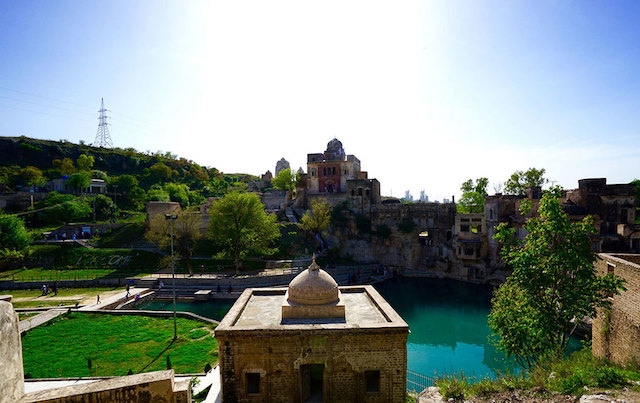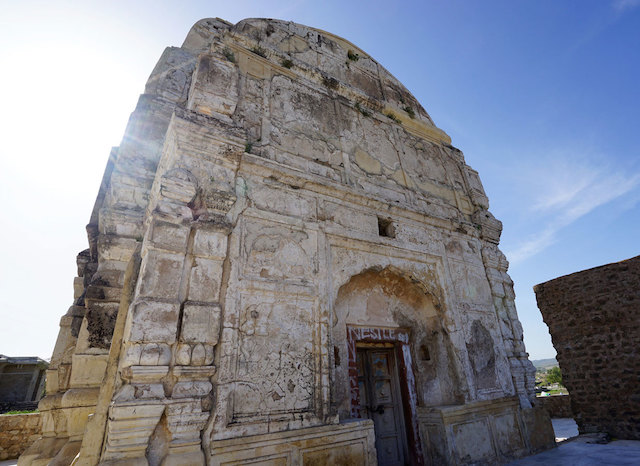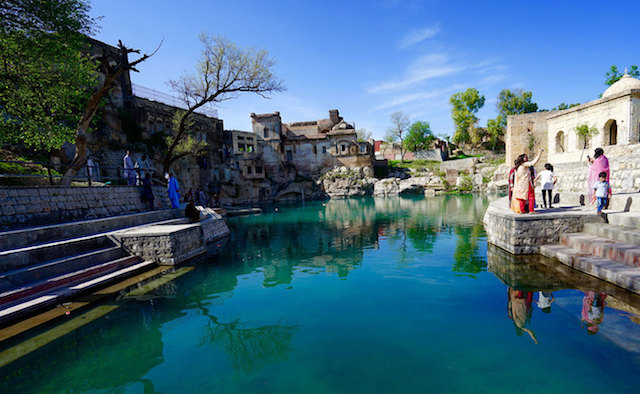Katas Raj temples: Pakistan









This is a collection of articles archived for the excellence of their content. |
Contents |
Location: Chakwal, Punjab, Pakistan
Dawn, July 30, 2016
Nefer Sehgal
The place has a unique historical connotation as it is said that Al Biruni, the Persian scholar and polymath, during medieval times had computed Earth's circumference from here.
Spreading its beauty near Chakwal in Punjab province of Pakistan, the most reverenced among all the temples are the Katas Raj Temples. In a heaven like surrounding, complex of temples stands in homage to the deities of Hindu mythology.
The Katas site houses the Satgraha or seven temples, a gathering of seven old temple, remains of a Buddhist stupa, a couple of medieval sanctuaries, havelis and some as the newly built sanctuaries, scattered around a lake considered sacred by Hindus.
The sanctuaries at Katas are mostly developed on square platforms. The elevation of the sub shrines seems to form a series of cornices with small rows of pillars, crowned by a ribbed dome.
According to Alan Cunningham, the first Director General of the Archaeological Survey of India in 1872-73 CE, Katasraj is the second biggest holy place in Punjab for Hindu pioneers after Jawala Mukhi. It is said prominent Pandwas brothers lived 12 years in Katas and assembled the sanctuaries of Satghara.
Katas Raj, a conglomeration of temples preserves at least 1500 years worth of history ranging from Buddhist era to British rule in that particular space.
Maintenance
November 2017/ SC: Pakistan failed to save the temple's pond
Mian Saqib Nisar, Chief Justice of the Pakistan Supreme Court has criticised the government of Punjab province for its failure to safeguard Katas Raj temple, one of the most revered places of worship for Hindus in the country.
Suo motu notice
The Supreme Court had taken suo motu notice of the case last week after reports published in local media that Katas Raj temple pond was drying up as cement factories and settlements in Katas and Choa Saidan Shah were drawing water through borewells.
“Katas temple is not just a sacred place for the Hindu community, but also a part of our cultural and national heritage,” the Chief Justice observed.
The Punjab government in a report submitted in the Supreme Court earlier this week admitted that an aquifer feeding the pond at the temple complex is facing a drastic fall in the water level due to boring of tube wells by a cement factory.
The Chief Justice directed the Punjab government to establish a high-level committee to probe the matter and also issued a notice to the cement factory.
Alternative water supply Justice Nisar also asked the authorities to find a substitute water supply scheme to spare the pond. “We have to find a solution as to how water can be provided. If we need to close down tube-wells or halt the water consumption of the factories, we will do it,” he said.
Hindus believe that Katas Raj pond was formed after Lord Shiva wept on the death of Sati, his wife.